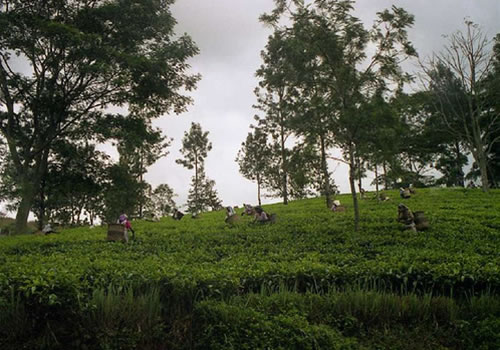
I almost always buy Darjeelings, Nilgiris, and suchlike teas. But a couple days ago, I decided to be bold and wild, and I bought Tea Gschwendner's "Ceylon Pekoe, Uva Highlands: Highgrown," from their store in Algonquin, Illinois (outside of Chicago). Link here: http://www.teamerchants.co
TeaGschwendner's description is as follows:
The highest heights of Uva at their very best. A smaller leaf size translates weight to cup dominated by peak notes of juicy summer fruit. The rusty copper cup brims with the finest Ceylon character—fragrant with rich mouth feel. Our Finest Ceylon tea. Preparation: 2g tea leaves (1 heaping teaspoon) per 8oz cup of filtered, boiling water. Allow to brew 2 min.
Cost: $11.90 per 100g of closely-furled, small tea leaves.
First off, I'm surprised that an OP (orange pekoe) tea, which has such small leaves, can have such a great taste. Most of my teas have long, unbroken leaves, and typically they have a long string of letters like SFTGFOP1 after the name. Tea Gsch. has a very good product line, so I decided to trust them anyway.
[EDITOR'S NOTE: Apparently, Ceylon teas are not judged with the SFTGFOP1 designations at all, and OP can mean the highest quality. It's the Highgrown that people look for, I guess.]
And my trust was rewarded. Maybe it's because I'm not used to Ceylons, but this tea was... allusive. It had such a different taste profile from those teas I usually drink, that it rather exploded in my mouth. But I was frustrated, because I lack the descriptive ability to figure out what in the world I was tasting. It reminded me of something-- some candy I had eaten? Or a smell, was it, that I came across in my grandmother's kitchen?-- and I could not for the life of me put my finger on it. Fruity, but-- no, that's not it....
Anyway, it was such a singular moment, tasting something unusual that I do not have the vocabulary or breadth of experience in tea to be able to properly parse out the different flavor notes I was experiencing. It felt like some peasant from the French vineyard region suddenly stumbling upon a mai tai. Delicious, strange, and what the heck?
------
Incidentally, looking up the Uva Highlands in Ceylon (Sri Lanka), I discovered an abstract of an article describing how the tea farming practices are not long-term sustainable. http://www.bioone.org/doi/


0 comments:
Post a Comment